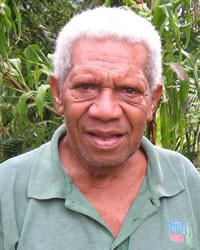Foran, Kamba in Papua New Guinea

Photo Source:
Anonymous
|
Send Joshua Project a map of this people group.
|
| People Name: | Foran, Kamba |
| Country: | Papua New Guinea |
| 10/40 Window: | No |
| Population: | 6,400 |
| World Population: | 6,400 |
| Primary Language: | Wagi |
| Primary Religion: | Christianity |
| Christian Adherents: | 90.00 % |
| Evangelicals: | 26.00 % |
| Scripture: | Portions |
| Ministry Resources: | Yes |
| Jesus Film: | No |
| Audio Recordings: | No |
| People Cluster: | New Guinea |
| Affinity Bloc: | Pacific Islanders |
| Progress Level: |
|
Introduction / History
Wagi people are standing at the edge between their traditional culture and the encroaching urban Papua New Guinean culture.
Five Wagi villages sit only a short distance from one of Papua New Guinea's largest urban centers, Madang. Many Wagi people travel to Madang regularly in PMVs (public motor vehicles), to work, shop, socialize, or sell produce or traditional string bags at the market.
The influence of urban culture is evident in the Wagi area. While most homes are made with traditional materials, such as bamboo and sago leaves, some are made with sawn lumber and metal roofs on a concrete foundation. Everyone wears western-style clothes most of which are purchased at secondhand shops in Madang. Wagi people eat mostly food grown in their gardens, like taro, greens, corn, sugarcane, bananas, and pineapples, but they also supplement their diet with food from town, like rice, noodles, and tinned meat.
What Are Their Beliefs?
Christianity first entered the Wagi area around 1910, when some Wagi men traveled to a Lutheran mission station in a neighboring language, became Christians, and returned to share the good news with their own people. Even though there are now fourteen churches in the area, many people don't have a true understanding of the gospel.
What Are Their Needs?
In the early 1990s, a missionary family moved into the Wagi area to translate the Bible. Unfortunately, they left only a short time later because of illness, and the work stopped. However, in 2008, three Wagi men restarted the translation work and have already revised and distributed some Scripture portions done by the original translator.